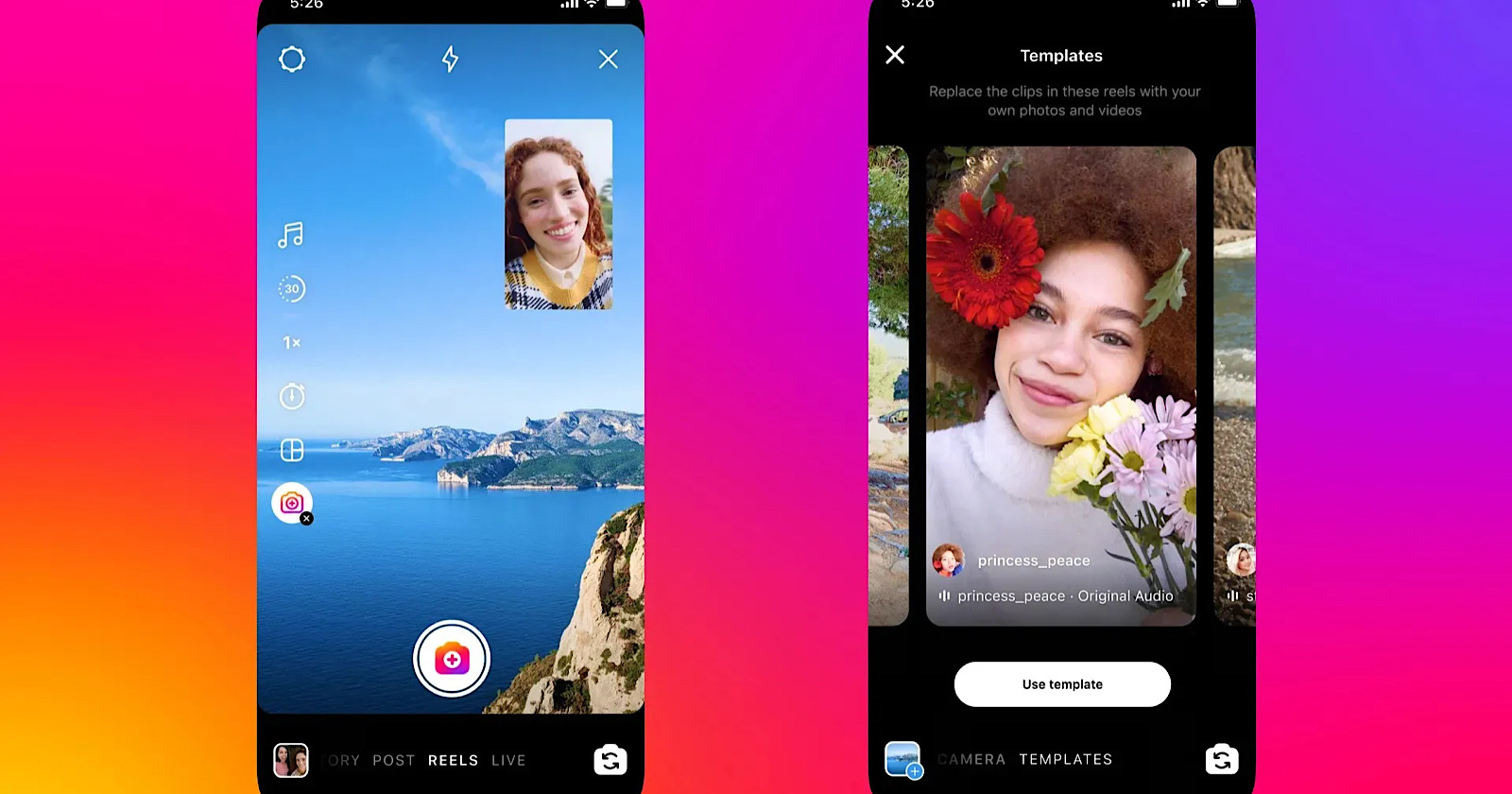SEO For Higher Education: Best Practices For Academic Institutions via @sejournal, @AdamHeitzman
Learn the importance of a strong SEO strategy for colleges to enhance online visibility, attract prospective students, and increase enrollment. The post SEO For Higher Education: Best Practices For Academic Institutions appeared first on Search Engine Journal.

The competition for student enrollment has never been stronger.
Many colleges struggle to stand out online and attract new students. Without a strong SEO strategy, your school remains hidden, and potential students won’t find you.
This includes details about admission processes, available programs, extracurricular activities, and other tiny details that attract the typical student.
A solid SEO strategy helps you appear in search results, increases brand recognition, boosts credibility among parents and students, and ultimately increases enrollment.
Here’s how you can implement it:
Critical Components Of An Effective SEO Strategy
Understanding Your Target Audience
Identify audience segments, such as prospective students, current students, faculty, staff, alumni, and visitors. Rank them by importance based on the institution’s goals. For example, prospective students could be the highest priority.
Understanding these audiences, their needs, and search habits will help you create content and SEO strategies to reach them effectively.
However, with over 17 million high schoolers and 16 million undergraduates in the U.S. (data from 2021), who are your target audiences?
Here’s how to know them:
Use surveys among current students to understand their motivations and concerns. For example, use a simple poll on the school website asking, “What are the top three factors you consider when choosing a university?” or “Why did you choose us?”Their answers can give insights into why your institution was a top choice, and you can include these details while writing landing pages, program pages, or student experience pages.
This makes it easy to lead every page with a promise that matters to your target audience.
Analyze website analytics to determine your traffic sources and most popular pages. Traffic sources reveal the demographics engaging with your website and how they are led to it. Analyzing the most popular pages also shows the content that resonates with your target audience.Merging this analysis helps you create content that targets your audience and meets their search intent.
There are four types of search intent (commercial, transactional, informational, and navigational). For colleges and universities, the most common intents tend to be informational, commercial, and transactional.
Analyzing search intent helps you target keywords that reflect what searchers are looking for. Here’s what that looks like:
Informational keywords, such as “best universities in the US,” “top engineering schools,” or “best liberal arts colleges” are common queries for general information. These keywords indicate that searchers are looking for options. Commercial keywords, e.g., “online MBA programs,” “online master’s in data science,” and “nursing programs with scholarships,” are common queries for specific programs. These indicate that searchers want to know about schools offering these programs (and also learn about what sets each institution apart). This is where you create dedicated landing pages for each program explaining why your school should be at the top of students’ minds in their decision-making phase. Transactional keywords, e.g., “application deadlines,” “tuition fees,” or “campus dates,” show intent to do something. These users are closer to making a decision, and they want information on their exact query. These keywords are usually preceded by a branded search (e.g., “UCLA application deadline”).Creating content that engages your target audience is essential. When your content matches their search intent, it sends positive signals to Google.
This can improve your rankings and increase traffic. Keyword research plays a key role in this process, ensuring your content meets the needs and search habits of your audience.
Read more: How People Search: Understanding User Intent
Keyword Research And Analysis
Keyword research means finding the words students use when they search online. These terms can help your website show up in searches.
Tips to get started:
Brainstorm seed keywords: Make a list of words related to your school and programs. For example: “computer science,” “business administration,” “online MBA in marketing,” “online courses,” “coastal university,” and “urban campus.” Use advanced keyword tools: Tools like Semrush and Ahrefs offer detailed insights into search volume, competition, keyword difficulty, and trends. Use these tools to discover keyword opportunities that your competitors might be missing. Identify long-tail keywords: These longer phrases, like “scholarships for international students studying cyber security,” have lower search volumes but higher conversion rates. They attract users who are further along in their decision-making process. Analyze competitor keywords: Use tools to spy on competitors’ keywords and find gaps in their content. Target these gaps to improve your visibility and attract more traffic. Consider seasonal trends: Use tools to analyze search trends throughout the year. Optimize your landing pages for terms like “summer courses” or “fall application deadlines” during relevant periods.Read more: Keyword Research: An In-Depth Beginner’s Guide
On-Page Optimization
On-page optimization is where you include relevant keywords in your content to improve visibility on search engine results pages (SERPs). Use your primary keyword in:
Title Tags: Your title is one of the first things search engines see. Include your primary keyword(s) here; keep it concise and compelling to attract traffic. Here are examples of well-optimized title pages for the [online MBA program] query:![Google search results for [online MBA program]](https://www.searchenginejournal.com/wp-content/uploads/2024/06/online-mba-program-google-search-485-768x785.png) Screenshot from search for [online MBA program], June 2024
Screenshot from search for [online MBA program], June 2024
 Screenshot from search for [online MBA program], June 2024
Screenshot from search for [online MBA program], June 2024
Read more: 12 Essential On-Page SEO Factors You Need To Know
Technical SEO Considerations
The goal of every search engine is to provide relevant content to searchers, and good technical SEO makes your website easier to find and use. Focus on these areas:
Page Speed: Your website should load in one to three seconds. A slow site can frustrate users and impact your rankings. Choose reliable hosting: Ensure your hosting can handle your website’s traffic. Compress images and files: Use tools like TinyPNG or ShortPixel to reduce file sizes without losing quality. Enable browser caching: This helps returning visitors load your site faster. Mobile Optimization: Use a responsive design that adjusts to different screen sizes. Test your site on various devices to ensure it works well everywhere. Schema Markup: Add structured data to your website’s HTML. Schema markup, or structured data, allows search engines to understand your institution and its offerings better. It’s a form of code you can add to your website’s HTML that uses a specific vocabulary to label and describe different elements of your content.Schema Markup is important because it enables search engines to display rich snippets in search results.
These enhanced listings can include star ratings, images, event dates, and other relevant details to make your institution’s results more visually appealing and informative. Here’s an example from Rutgers Business School:
![Google search results for [rutgers university]](https://www.searchenginejournal.com/wp-content/uploads/2024/06/rutgers-university-google-search-591.png) Screenshot from search for [rutgers university], June 2024
Screenshot from search for [rutgers university], June 2024
You can see details about addresses, tuition fees, campus type, and other helpful links without directly engaging the website.
Research shows that structured data increases click-through rates by presenting users with context-rich information in search results. This captures user attention and builds trust even before they visit the site, which in turn increases organic traffic.
Read more: The Complete Technical SEO Audit Workbook
Implementing Local SEO For Campuses
If your school has multiple campuses, local SEO is important.
Create location pages: Make a separate page for each campus with details like address, contact information, and unique programs. Optimize for local keywords: Use keywords that include your city or neighborhood, like “best colleges in downtown Chicago.” Claim your Google Business Profile: Make sure each campus has a Google Business Profile listing with up-to-date information.Read more: How To Create A Winning Local SEO Content Strategy
Leveraging Video Content
Video content can engage students better than text alone.
Create informative videos: Make videos about campus tours, student testimonials, and program highlights. Optimize video titles and descriptions: Use keywords in your video titles and descriptions to help them show up in search results. Embed videos on your website: This can keep visitors on your site longer and improve engagement.Read more: 10 YouTube Marketing Strategies & Tips (With Examples)
Optimizing Site Structure And Navigation
A well-structured website helps both users and search engines.
Simple navigation: Keep your menu simple and easy to use. Clear hierarchy: Organize your pages logically, with main categories and subcategories. Internal linking: Link-related pages to each other to help users find more information and search engines understand your site better.Read more: Why Google Recommends Hierarchical Site Structure For SEO
Conclusion
Improving your school’s SEO is a long-term investment.
However, you can start today by creating content that targets students to amplify your brand and increase credibility. This will help increase visibility, attract more students, and build your school’s online reputation.
Whether you’re a new or established institution, good SEO practices can help you reach your goals.
More resources:
Best SEO Courses Online – Free & Paid Options Learn SEO: A Blueprint From Beginner To Advanced SEO Strategy: A Full Year Blueprint (+Template)Featured Image: Prostock-studio/Shutterstock

 Lynk
Lynk 
































